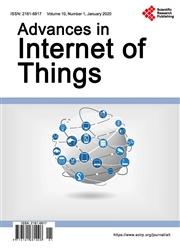Tackling IoT Scalability with 5G NFV-Enabled Network Slicing
引用次数: 4
Abstract
With emerging large volume and diverse heterogeneity of Internet of Things (IoT) applications, the one-size-fits-all design of the current 4G networks is no longer adequate to serve various types of IoT applications. Consequently, the concepts of network slicing enabled by Network Function Virtualization (NFV) have been proposed in the upcoming 5G networks. 5G network slicing allows IoT applications of different QoS requirements to be served by different virtual networks. Moreover, these network slices are equipped with scalability that allows them to grow or shrink their instances of Virtual Network Functions (VNFs) when needed. However, all current research only focuses on scalability on a single network slice, which is the scalability at the VNF level only. Such a design will eventually reach the capacity limit of a single slice under stressful incoming traffic, and cause the breakdown of an IoT system. Therefore, we propose a new IoT scalability architecture in this research to provide scalability at the NS level and design a testbed to implement the proposed architecture in order to verify its effectiveness. For evaluation, three systems are compared for their throughput, response time, and CPU utilization under three different types of IoT traffic, including the single slice scaling system, the multiple slices scaling system and the hybrid scaling system where both single slicing and multiple slicing can be simultaneously applied. Due to the balanced tradeoff between slice scalability and resource availability, the hybrid scaling system turns out to perform the best in terms of throughput and response time with medium CPU utilization.通过支持5G nfv的网络切片解决物联网可扩展性问题
随着物联网(IoT)应用的大容量和多样化异构性的出现,目前4G网络的一刀切设计已经不能满足各种类型的物联网应用。因此,网络功能虚拟化(NFV)支持的网络切片概念已在即将到来的5G网络中提出。5G网络切片允许不同的虚拟网络服务不同QoS要求的物联网应用。此外,这些网络片具有可伸缩性,允许它们在需要时增加或缩小虚拟网络功能(Virtual network Functions, VNFs)实例。然而,目前所有的研究都只关注单个网络片的可伸缩性,也就是VNF级别的可伸缩性。这样的设计最终会在压力传入流量下达到单个切片的容量极限,并导致物联网系统的崩溃。因此,我们在本研究中提出了一种新的物联网可扩展性架构,以提供NS级的可扩展性,并设计了一个测试平台来实现所提出的架构,以验证其有效性。为了进行评估,比较了三种系统在三种不同类型物联网流量下的吞吐量、响应时间和CPU利用率,包括单片扩展系统、多片扩展系统和同时应用单片和多片的混合扩展系统。由于切片可伸缩性和资源可用性之间的平衡,混合扩展系统在吞吐量和响应时间方面表现最佳,CPU利用率中等。
本文章由计算机程序翻译,如有差异,请以英文原文为准。
求助全文
约1分钟内获得全文
求助全文

 求助内容:
求助内容: 应助结果提醒方式:
应助结果提醒方式:


